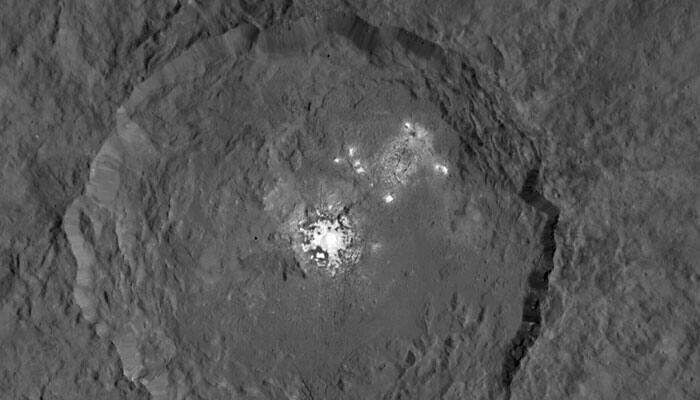Washington: NASA's Dawn spacecraft has delivered the closest-yet views of the brightest spots on the dwarf planet Ceres.
The new up-close view of the spots, which scientists named 'Occator crater', will give scientists a deeper perspective on these very unusual features.
Also Read: When NASA confused the moon with sun!
The newly-released image, with a resolution of 450 feet (140 meters) per pixel, was captured by the Dawn spacecraft at a height of 915 miles (1,470 km).
Because these spots are so much brighter than the rest of Ceres' surface, the Dawn team combined two different images into a single composite view -- one properly exposed for the bright spots, and one for the surrounding surface, said NASA.
Scientists also have produced animations that provide a virtual fly-around of the crater, including a colorful topographic map.
The individual animations are available at:
http://www.jpl.nasa.gov/spaceimages/details.php?id=pia19890
http://www.jpl.nasa.gov/spaceimages/details.php?id=pia19891
Also Read: NASA, ESA release new Hubble image: Spiral galaxy M96
Dawn scientists note the rim of Occator crater is almost vertical in some places, where it rises steeply for 1 mile (nearly 2 kilometers).
“Dawn has transformed what was so recently a few bright dots into a complex and beautiful, gleaming landscape,” said Marc Rayman, Dawn's chief engineer and mission director, said in a NASA release.
“Soon, the scientific analysis will reveal the geological and chemical nature of this mysterious and mesmerising extraterrestrial scenery.”
Also Read: Watch - Mysterious fireball over Bangkok sky!
The images from Dawn's current orbit are nearly 10 times better when compared to images the probe delivered from its previous orbit in April and May.
NASA said the spacecraft has already completed two 11-day cycles of mapping the surface of Ceres from its current altitude, and began the third on September 9. Dawn will map all of Ceres six times over the next two months. Each cycle consists of 14 orbits.
Dawn is the first mission to visit a dwarf planet, and the first to orbit two distinct solar system targets. It arrived at Ceres on March 6, 2015.
















